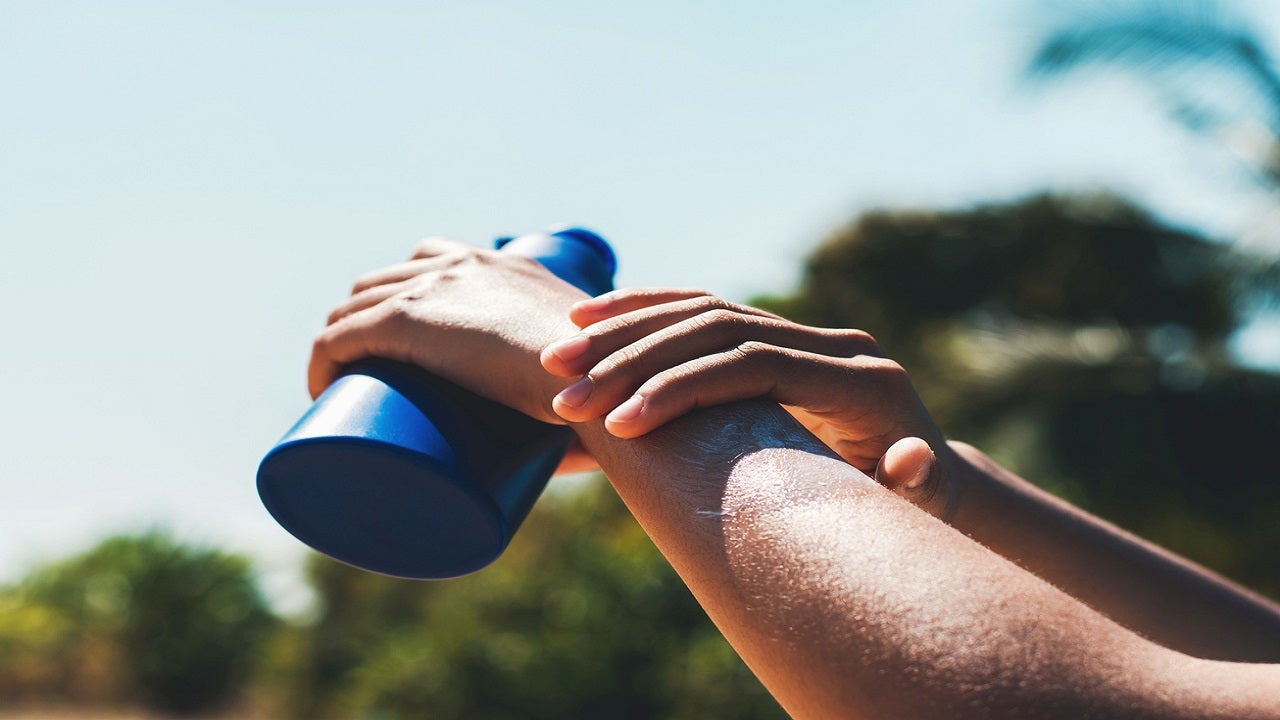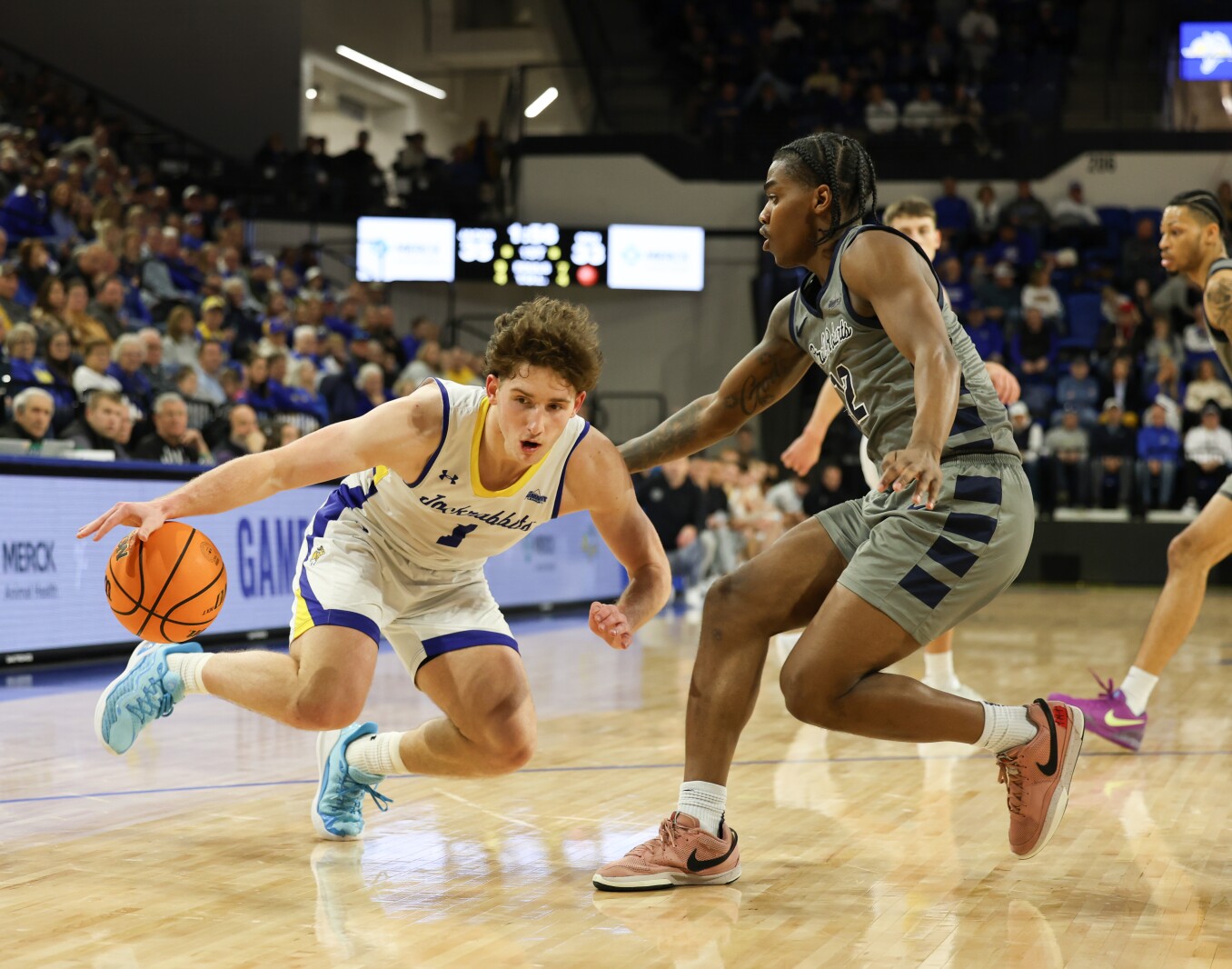Health
What SPF should your sunscreen have? Find out how it may help premature aging and skin cancer

Cancer, heart disease vaccine could be ready by 2030
Fox News medical contributor Dr. Janette Nesheiwat says the technology that the vaccine uses has been studied since the 1980s and that it teaches the body to recognize cancerous cells in order to attack and destroy them.
During the summer, millions of Americans who love to enjoy the hot sun should do their best to protect their skin from harmful ultraviolet rays by following strict sunscreen practices.
What SPF should your sunscreen have?
Find out how it may help premature aging and skin cancer.
Roughly one in five Americans would eventually develop some form of skin cancer over their lifetime, the American Academy of Dermatology (AAD) said in a 2022 report.
MELANOMA CAN BE PREVENTED WITH REGULAR SKIN CHECKS AND THE ‘ABCDE’ RULE : AMERICAN ACADEMY OF DERMATOLOGY
However, the organization recommended that individuals can reduce the risk by wearing protective clothing while outside, such as long-sleeved shirts, pants, hats and sunglasses, as well as seeking shade.
Moreover, sunscreen can also help individuals avoid developing wrinkles and help stop age spots. Read below to find out the best practices regarding sunscreen before you go out this summer.
What SPF should your sunscreen have?
The American Academy of Dermatology recommends sunscreen with broad-spectrum protection against UVA and UVB rays, one that is SPF 30 or higher and is also water-resistant.
Make sure to use sunscreen that has an SPF of at least 30 or higher, according to the AAD. (iStock)
“SPF” stands for sun protective factor, but many people think the number relates to the time of solar exposure.
Yet this is not correct, said Dr. Darrell Rigel, clinical professor of dermatology at Mount Sinai Icahn School of Medicine and a former president of the American Academy of Dermatology, during a 2022 interview with Fox News Digital.
“For example, many consumers believe that, if they normally get sunburn in one hour, then an SPF 15 sunscreen allows them to stay in the sun 15 hours (i.e., 15 times longer) without getting sunburn. This is not true because SPF is not directly related to the time of solar exposure but to [the] amount of solar exposure,” the Food Drug and Administration (FDA) said.
Most people will need to reapply sunscreen every 90 minutes, but sweating or swimming may require more frequent application intervals.
The SPF number tells how long the sun’s UV radiation will take to cause a sunburn when using sunscreen (as directed) compared to the amount of time without sunscreen, Rigel said.
“Because SPF values are determined from a test that measures protection against sunburn caused by UVB radiation, SPF values only indicate a sunscreen’s UVB protection,” the FDA said.
Rigel encourages the use of SPF of 50 or higher, as many people only put 25%-50% of the required amount of sunscreen to reach the SPF amount on the label. So if they are applying SPF 15 or SPF 30, they might be getting less protection than expected.
What areas of the skin need sunscreen?
Rigel recommends applying sunscreen on all exposed skin, taking special care to not forget the nose, as roughly a third of all skin cancers are on the nose because it “sticks out.”
“Most adults need about 1 ounce – or enough to fill a shot glass – to fully cover their entire body. Don’t forget to apply to the tops of your feet, your neck, your ears and the top of your head,” the AAD said.
SUNSCREEN HELPS PREVENT PREMATURE AGING AND SKIN CANCER: HOW TO PICK THE BEST ONE
Rigel said most people will need to reapply sunscreen every 90 minutes, but sweating or swimming may require more frequent intervals.
He told Fox News Digital that no sunscreen is “waterproof” because all sunscreens will wash off, but sunscreens are labeled “water-resistant” or “very water-resistant.”

Always make sure to apply sunscreen to exposed areas of your body, especially your face and neck. (iStock)
“The labels are required to state whether the sunscreen remains effective for 40 minutes or 80 minutes when swimming or sweating, and all sunscreens must provide directions on when to reapply,” the FDA said on their website.
Rigel explained that “water-resistant” sunscreens are rated effective for 40 minutes, while “very water-resistant” are effective for 80 minutes.
He recommends the best sunscreen to use is the one you will use on a regular basis.
About 50% sunscreens are sold as sprays, he said. Although they more easily cover more surface area, he said that non-spray formulations are often more effective, as it’s difficult sometimes to tell what part of the skin the spray has covered, compared to lotions, which allow people to more accurate.
“Even on cloudy days, up to 80% of the sun’s harmful UV rays can penetrate the clouds.”
Ultimately, he said it comes down to personal preference — and reminds that sunscreens alone may not protect the skin.
The American Academy of Dermatology recommends avoiding the sun’s rays when they are strongest, which is usually between 10 a.m. and 2 p.m.
HOW TO KNOW IF YOUR SUNSCREEN IS EXPIRED
“If your shadow is shorter than you are, seek shade,” the AAD said.
Dermatologists also recommend wearing clothing to cover the skin, such a long-sleeved shirt, pants, a wide-brimmed hat and sunglasses with UV protection.

Using sunscreen and wearing long-sleeve clothing outside can help you reduce your risk of developing skin cancer during the summer. (iStock)
And don’t just wear sunscreen when the sun’s out. Apply sunscreen daily if you are going to be outside, because the sun emits harmful UV rays all year.
“Even on cloudy days, up to 80% of the sun’s harmful UV rays can penetrate the clouds,” the AAD said.
How should you treat a sunburn?
Rigel suggested cooling lotions containing menthol and 1% hydrocortisone cream to treat inflammation as well as aspirin to treat any swelling, redness or discomfort.
Normally the skin’s epidermal cells turn over in 28 days; but we don’t see the skin turn over because they normally slough off in the shower.
CLICK HERE TO SIGN UP FOR OUR HEALTH NEWSLETTER
But when we have a sunburn, the skin turns over in 5–7 days because the injured skin cells don’t have time to separate, leading to visible peeling of skin, Rigel said.
He said a sunburn will typically heal fine as long there is no blistering, which is a sign of a second-degree burn.
A second-degree burn that gives blistering may lead to scarring and the number of blistering episodes directly correlates to the risk of developing melanoma later in life, Rigel said.

Health
Semaglutide Pills and Injections Vs. Drops: Experts Weigh In | Woman's World

Sign Up
Create a free account to access exclusive content, play games, solve puzzles, test your pop-culture knowledge and receive special offers.
Already have an account? Login
Use left and right arrow keys to navigate between menu items.
Use escape to exit the menu.
Health
Jennifer Hudson Lost 80-Lbs Without Depriving Herself—Learn Her Secrets

Sign Up
Create a free account to access exclusive content, play games, solve puzzles, test your pop-culture knowledge and receive special offers.
Already have an account? Login
Use left and right arrow keys to navigate between menu items.
Use escape to exit the menu.
Health
Kennedy’s Plan for the Drug Crisis: A Network of ‘Healing Farms’

Though Mr. Kennedy’s embrace of recovery farms may be novel, the concept stretches back almost a century. In 1935, the government opened the United States Narcotic Farm in Lexington, Ky., to research and treat addiction. Over the years, residents included Chet Baker and William S. Burroughs (who portrayed the institution in his novel, “Junkie: Confessions of an Unredeemed Drug Addict”). The program had high relapse rates and was tainted by drug experiments on human subjects. By 1975, as local treatment centers began to proliferate around the country, the program closed.
In America, therapeutic communities for addiction treatment became popular in the 1960s and ’70s. Some, like Synanon, became notorious for cultlike, abusive environments. There are now perhaps 3,000 worldwide, researchers estimate, including one that Mr. Kennedy has also praised — San Patrignano, an Italian program whose centerpiece is a highly regarded bakery, staffed by residents.
“If we do go down the road of large government-funded therapeutic communities, I’d want to see some oversight to ensure they live up to modern standards,” said Dr. Sabet, who is now president of the Foundation for Drug Policy Solutions. “We should get rid of the false dichotomy, too, between these approaches and medications, since we know they can work together for some people.”
Should Mr. Kennedy be confirmed, his authority to establish healing farms would be uncertain. Building federal treatment farms in “depressed rural areas,” as he said in his documentary, presumably on public land, would hit political and legal roadblocks. Fully legalizing and taxing cannabis to pay for the farms would require congressional action.
In the concluding moments of the documentary, Mr. Kennedy invoked Carl Jung, the Swiss psychiatrist whose views on spirituality influenced Alcoholics Anonymous. Dr. Jung, he said, felt that “people who believed in God got better faster and that their recovery was more durable and enduring than people who didn’t.”
-
/cdn.vox-cdn.com/uploads/chorus_asset/file/25822586/STK169_ZUCKERBERG_MAGA_STKS491_CVIRGINIA_A.jpg)
/cdn.vox-cdn.com/uploads/chorus_asset/file/25822586/STK169_ZUCKERBERG_MAGA_STKS491_CVIRGINIA_A.jpg) Technology1 week ago
Technology1 week agoMeta is highlighting a splintering global approach to online speech
-

 Science1 week ago
Science1 week agoMetro will offer free rides in L.A. through Sunday due to fires
-
/cdn.vox-cdn.com/uploads/chorus_asset/file/23935558/acastro_STK103__01.jpg)
/cdn.vox-cdn.com/uploads/chorus_asset/file/23935558/acastro_STK103__01.jpg) Technology1 week ago
Technology1 week agoAmazon Prime will shut down its clothing try-on program
-

 News1 week ago
News1 week agoMapping the Damage From the Palisades Fire
-
/cdn.vox-cdn.com/uploads/chorus_asset/file/25826211/lorealcellbioprint.jpg)
/cdn.vox-cdn.com/uploads/chorus_asset/file/25826211/lorealcellbioprint.jpg) Technology7 days ago
Technology7 days agoL’Oréal’s new skincare gadget told me I should try retinol
-
/cdn.vox-cdn.com/uploads/chorus_asset/file/25832751/2192581677.jpg)
/cdn.vox-cdn.com/uploads/chorus_asset/file/25832751/2192581677.jpg) Technology3 days ago
Technology3 days agoSuper Bowl LIX will stream for free on Tubi
-

 Business5 days ago
Business5 days agoWhy TikTok Users Are Downloading ‘Red Note,’ the Chinese App
-
/cdn.vox-cdn.com/uploads/chorus_asset/file/25835602/Switch_DonkeyKongCountryReturnsHD_scrn_19.png)
/cdn.vox-cdn.com/uploads/chorus_asset/file/25835602/Switch_DonkeyKongCountryReturnsHD_scrn_19.png) Technology1 day ago
Technology1 day agoNintendo omits original Donkey Kong Country Returns team from the remaster’s credits














